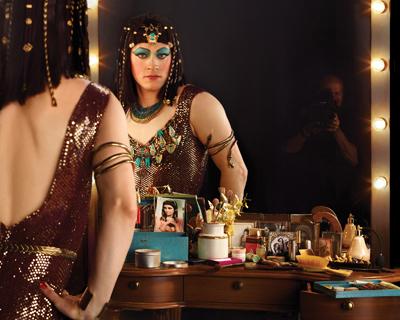Weyni Mengesha didn’t grow up going to the theatre. A child of Ethiopian immigrants, the Toronto-based director spent much of her youth dropping acid and dodging the cops. Struggling to connect with her African roots while carving out an identity as one the few black youth in her Vancouver neighbourhood, she stumbled on theatre as a way to do both.
“I started doing skits in high school as a way of exploring those ideas,” she says. “I had a drama teacher who saw I had a natural talent and encouraged me. Making theatre gave me a focus and put me on the right path.”
It’s been a steady climb since then. Mengesha made waves while she was still a directing student at York University when she helmed Trey Anthony’s Da Kink in My Hair, a Fringe Festival sensation later presented by Mirvish Productions at the Princess of Wales Theatre. Since then she’s worked with local heavy hitters like Soulpepper and Luminato, as well as a bevy of national and international companies. But if the success has gone to her head, you’d never know it.
“I really never imagined what was in store,” she says quietly. “It feels like only yesterday I was at theatre school trying to find my voice and learn how to make work.”
Her latest turn will see her direct queer Quebec icon Michel Tremblay’s Hosanna at the Stratford Festival. Unfolding over a single evening in a crumbling Montreal bachelor, the play features cohabitating couple Hosanna (Gareth Potter), an aging drag queen, and Cuirette (Oliver Becker), her handsome but overweight lover. Hosanna and Cuirette have just returned from a disastrous Halloween party where Hosanna was humiliated by a group of local queens intent on putting her in her place.
Festival director Des McAnuff approached Mengesha a year ago about the piece.
“I hadn’t read it since theatre school, and I honestly didn’t remember very much about it,” she says. “But I was completely taken by it. It’s such an incredible journey and I really related to the theme of being afraid to express who you really are, for fear you won’t be loved.”
Typical of her fastidious approach to play-making, she embarked on an intensive research process into the play’s history, as well as the cultural context in which it was born. First performed in Montreal in 1973 a few short years after the October Crisis, the work resonated with Quebeckers as a metaphor for their own struggle for identity. Even though it’s very much about the time and place in which it was written, Mengesha says the piece will resonate with contemporary audiences.
“The central themes of identity and being loved for who you are are as relevant today as they ever were,” she says. “One of the things that struck me when I first reread it was just how timeless it feels, almost 40 years since it was first produced.”
Despite being one of the preeminent young theatre artists in the country, Mengesha hasn’t forgotten her roots. She co-helms two initiatives aimed at transforming the lives of youth through art. Sound the Horn, which she started in 2004, is dedicated to educating and empowering Ethiopian and Eritrean youth through visual and performing arts. The AMY Project, which began in 2005, helps young women create theatre projects as a means of developing both practical skills and self-esteem. She sees nurturing young artists as another part of her job.
“I started telling stories out of necessity,” she says. “I will always remember what was given to me by those early mentors and I want to be able to give back. It’s part of how I continue to grow as an artist.”


 Why you can trust Xtra
Why you can trust Xtra


